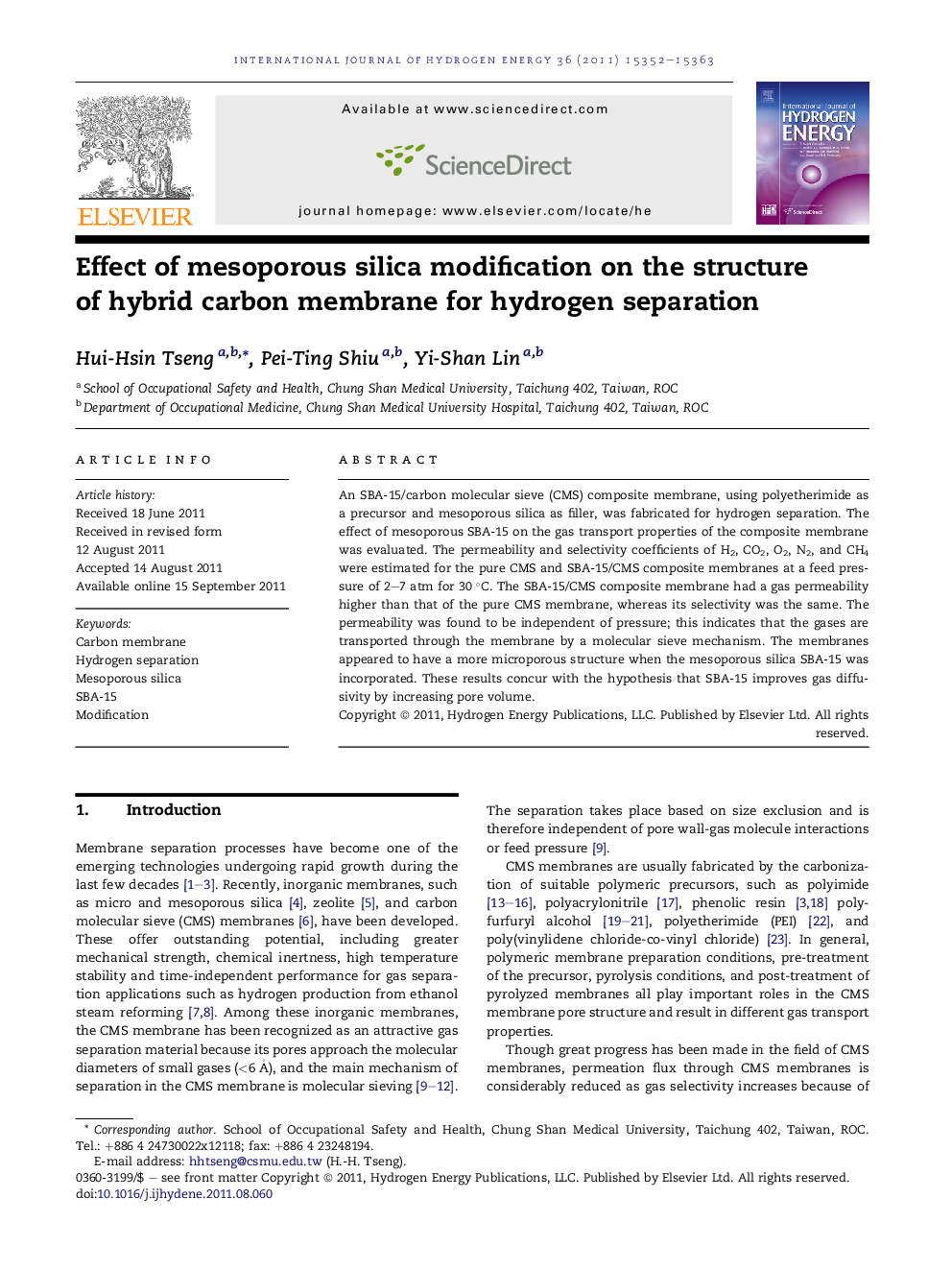| Article ID | Journal | Published Year | Pages | File Type |
|---|---|---|---|---|
| 1271829 | International Journal of Hydrogen Energy | 2011 | 12 Pages |
An SBA-15/carbon molecular sieve (CMS) composite membrane, using polyetherimide as a precursor and mesoporous silica as filler, was fabricated for hydrogen separation. The effect of mesoporous SBA-15 on the gas transport properties of the composite membrane was evaluated. The permeability and selectivity coefficients of H2, CO2, O2, N2, and CH4 were estimated for the pure CMS and SBA-15/CMS composite membranes at a feed pressure of 2–7 atm for 30 °C. The SBA-15/CMS composite membrane had a gas permeability higher than that of the pure CMS membrane, whereas its selectivity was the same. The permeability was found to be independent of pressure; this indicates that the gases are transported through the membrane by a molecular sieve mechanism. The membranes appeared to have a more microporous structure when the mesoporous silica SBA-15 was incorporated. These results concur with the hypothesis that SBA-15 improves gas diffusivity by increasing pore volume.
Graphical abstractThe incorporation of SBA-15 provides a large amount of gas diffusion channels in the ordered porous structure and develops a phase gap between the interfaces of SBA-15 and the carbon matrix, which showed higher permeation performance compared with the upper limit for the polymer membranes.Figure optionsDownload full-size imageDownload as PowerPoint slideHighlights► The polymer penetrates into the mesopores of SBA-15 and narrows the pore size. ► SBA-15 provides a large amount of diffusion channels in the ordered porous structure. ► SBA-15 develops a phase gap between the interfaces of SBA-15 and the carbon matrix.
